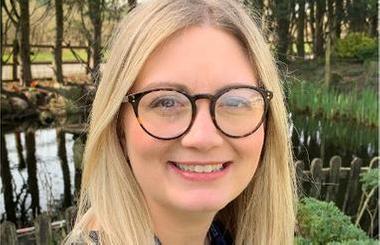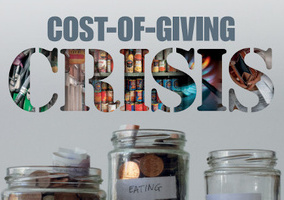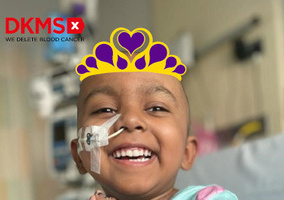St Clare Hospice provides specialist hospice care across West Essex and the borders of East Hertfordshire. We need to raise £5m this year to be able to continue to care for those that are facing death, dying and loss. For many years, fundraisers worked in set roles, each looking after their fundraising contacts. Since the fundraising team moved to a relationship fundraising model, we have seen a marked improvement in income generation, the donor journey, and team cohesiveness.
Up until recently, things were not working. We were continuously hitting brick walls; our monthly team meetings were only used to update on activity with little input from the team. In other areas of the hospice, the fundraising team was thought of “as just the ones who raise the money”. We were perceived as separate to the hospice. There were no free-flowing conversations with other departments.
The relationship fundraising model came to life in 1992 when Ken Burnett published Relationship Fundraising: A Donor-based Approach to the Business of Raising Money. He said that: “Relationship fundraising is an approach to the marketing of a cause which centres not around raising money but on developing to its full potential the unique and special relationship that exists between a charity and its supporter.”
Shifting our focus to the supporter and that relationship has created a positive shift in culture and we are really seeing the benefits of that change.
Open sharing
Previously, supporters had one point of contact and were very much stewarded for their isolated activity. The culture in-house was that only one person could be in contact with them and there were constant conversations about which income line would benefit from donations. With this new model, our team are now focused on getting to know our donors. We have a team where ideas and activities are openly shared and communication is improved within the team, as well as with our director.
Because the fundraisers now understand our supporters, relationships are built on more than just one donation. We encourage them to have conversations about their work activities, their dogs or their weekend plans; this gives us a deeper understanding of what the donor will want from St Clare. This also means that our fundraisers bring ideas and fresh thinking to the table, based on what they think would work for our supporters. This has led to both big and small changes for us, breaking the mould of what was our usual way of thinking about what the donor will benefit from.
We are making lots of changes as we embrace relationship fundraising, some larger than others. This new way of thinking and working has led to new ways of regarding and communicating with our donors. An example of this is how we described online donations. We changed the terminology that we use. A “one-off donation” to us was someone that is not a regular giver, but to the donor they could be someone that gives once a year or gives to every appeal, so the wording “one-off” makes no sense to them. It was terminology designed for us, not them.
Another big change for us is that relationships are not held by just one fundraiser. Sharing information within the team allows for fundraisers to be able to support donors should their usual contact not be available. This also means that relationships don’t break down if someone leaves the organisation. The benefit of this is that we are seeing more people doing multiple things for St Clare because they have had open conversations with our team.
A big part of relationship fundraising is that we aim to bring supporters closer to the work of the hospice and give them a greater understanding of all that we do. This helps fundraisers support the activity and be seen as part of the wider hospice, not viewed as a standalone team.
Donor journey
So, what does all this mean for our supporters?
Let’s take “Matt” as an example. Matt signed up to our April 10k race. This is the first year he has taken part. During the day, he speaks to our corporate fundraiser who is working at the event. We find out that Matt works for a local business. He invites our corporate fundraiser to talk at his organisation about the new St Clare business membership scheme. At that meeting, during a conversation he tells our fundraiser that he has a dog. Later in the year, he receives an email about our dog-walking event. He signs up and comes to our Winter Walkies fundraiser with his children. Conversation then turns to the local school his children go to and he puts us in touch with the head teacher so that we can organise talks with the school about death, dying and loss in an appropriate way and raise awareness. He is also a member of a local cricket club and they choose to host an event in aid of the hospice. Later, he moves house, and donates everything he clears out to our retail shops.
This kind of chain of events isn’t new. All of these things were happening anyway but we didn’t know about them. The relationship hadn’t been tracked, logged or shared with the team. In the past, supporters were not given the opportunity to be any more involved than the event they were at. However, by breaking down silos, and encouraging cross-team collaboration, we are finding new ways of working. Our teams are not afraid of change; however, change takes time and commitment – but by thinking outside of the box the culture will change.
No blame, just learnings
It is still early days but the hope is that with good team morale and a good atmosphere this will also result in better staff retention. By having continuous open conversations about projects, our team meetings now have active discussions about key topics, rather than passive lists. We have built a better team – one that is not in competition but works together. Focusing on relationships allows a more positive conversation than just about chasing targets. We have a whole team target, and the fundraisers help each other. They share the wins and the disappointments. We have come together as one team.
Some people will get to the stage of open conversations easily, while for others it might take time. As a manager, I think it is important to acknowledge that different team members will have different needs. A huge part of this process has been building trust. I want the team to know that they are trusted, that they can do things and they can make decisions themselves. Personally, I can find this challenging as I like to be in control, but this process is a learning curve for me too. The relationship fundraising method supports and encourages good leadership and management. Things will not always be perfect, but as long as we have open conversations, we can work through them together. Mistakes happen and not every project will work, but I hope to create a culture where there is no blame, only learnings.
To ensure success we will be continually adapting, and acting on what we learn. It’ll never be a finished product or a complete model that is guaranteed – the point is that it is constantly evolving, improving and learning – just like any successful relationship.
Amy Winehouse is head of relationship fundraising at St Clare Hospice @hospicestclare
Related articles












